 |
||
|
||
| ||
After the first part we have received many comments
on what should be done for improving the testing. We have done our
best to account your feedback and have brought the corresponding
corrections in the technique of testing. Besides, we have extended
the range of CD-Rs. Plus, trying to make the examination more objective
we used not only CD-RW Plextor W124TSi drive but also a popular
TEAC CD-W54E. I hope also that in future both the assortment and
the number of samples will increase. 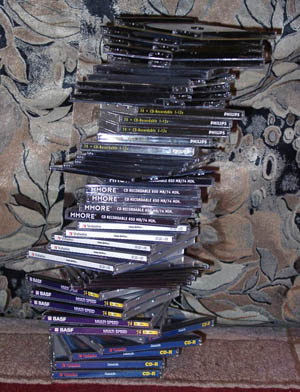 One of the questions was about a threshold for a CD-R based on the test results. I.e. what the maximum value is which would say that the disc is unfit for recording. Having done a plenty of calculations we drew a conclusion that it's impossible to get that value by the mathematical means. It's connected with the fact that the results are based on the average values of ten points where we have carried out measurements. Besides, you should take into consideration that when calculating a complex characteristic of a CD-R, "Error rate", we take the results of several parameters tested with the CDCATS SA3. Although the permitted limits for each of the parameters defined in the "Orange book" specification have fixed values, the part of the disc where the result was achieved is a also very important parameter. Theoretically, we could take a CD-R of a knowingly low quality and thus receive an example of the CD-R where one shouldn't store data. But in this situation low results can correspond not all three parameters. For example, optical characteristics can be of very poor quality, the geometry is just ideal, and data storage might be a rash step. That's why we should not look for the lowestbut compare the results and make some definite conclusion. The picture would be the most obvious if we had a possibility to keep track on the tendency of changing (or not) of the disc characteristics. We are going to create some kind of an expandable "library of CD-Rs", where you can find not only the illustration and ATIP of the disc but also some information on test results, what would allow us to backtrace the tendency of changing or keeping the quality level of one or another brand. As I have mentioned earlier the results from the test station are not understood without decoding. You can take a peep on the printout examples of the CD CATS SA3 stations here. I should also notice that the station gives results in digital form. For clarification on the main test parameters refer here. Now let's turn right to the CD-Rs under investigation. When buying the discs we followed the important, in our opinion, rule: we bought each brand only at one place (i.e. if there were insufficient number of discs at one place we bought nothing there). After that we recorded three discs from each company on the CD-RW Plextor PX-W124TSi and the TEAC CD-W54E at 2X, 4X and 8X (for the Plextor recorder) and 2X, 4X (for the TEAC recorder). Basf/EMTEC Multispeed 1x-16x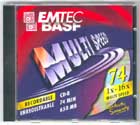 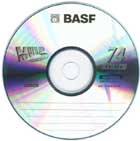 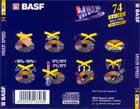 ATIP: 97m 24s 01f
Frankly speaking we didn't expect to see the Taio Yuden product in the Basf box. The main difference of the TY discs from others is a dull inner rim of the disc. 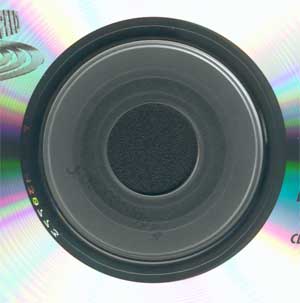 Memorex 1x-12x (slim box) 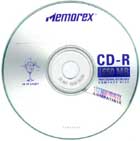 ATIP: 97m 26s 66f
The disc is kept in a slim-box which is twice thinner than the standard one. MMORE 650 MBytes 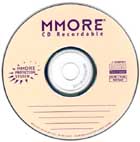 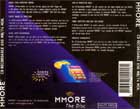 ATIP: 97m 26s 60f
The loose leaf contains the information that the disc is covered with "MMORE Protection System" coating Mirex (bulk) 650 MBytes ATIP: 97m 28s 26f
The "Bulk" CD-R is mainly intended for usage in duplicators (the device of several recorders joined together meant for a small-scale disc replication) and they are usually packed in polyethylene (there are usually 100 CD-Rs) or in special boxes on the spindle. As a rule such discs have no pictures on the idle disc side in order the user could make a desirable picture himself. SKY Platinum (bulk) 650 MBytes ATIP: 97m 31s 07f
These discs sold in the pack of 50 pcs on the spindle. It seems that the packing process wasn't accurate since almost all the discs had scratches. Philips Multi Purpose   ATIP: 97m 31s 09f
TDK D-View 650 MBytes (slim box) 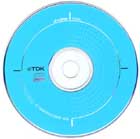 ATIP: 97m 32s 00f
Verbatim DataLife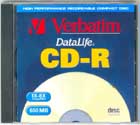 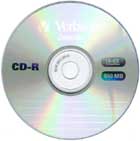  ATIP: 97m 26s 60f
Verbatim DataLifePlus (Metal AZO)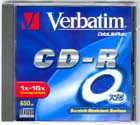  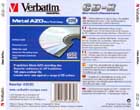 ATIP: 97m 34s 21f
The loose leaf contains the information on the special protection layer covering the disc. Test resultsThe less value corresponds to a higher quality index of a CD-R. The test results of the discs recorded on the CD-RW Plextor W124TSi driveThe diagrams for the CD-Rs recorded at 2X   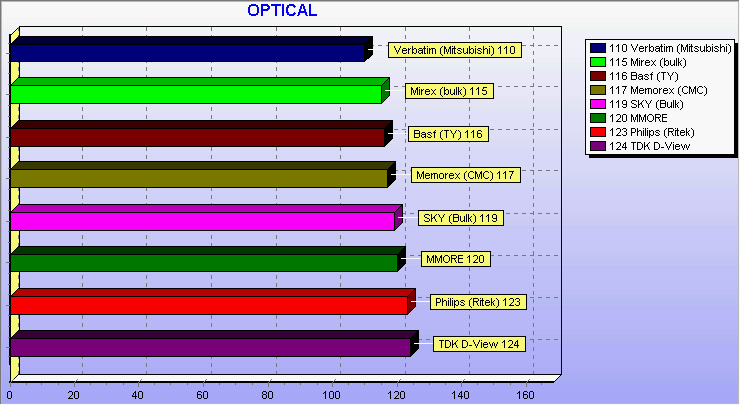 The diagrams for the CD-Rs recorded at 4X 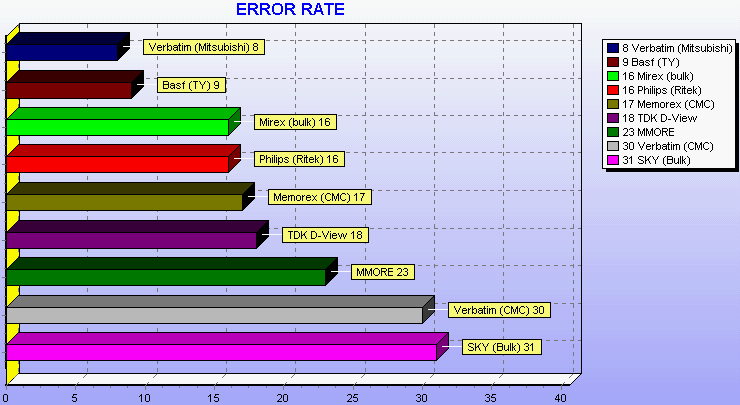 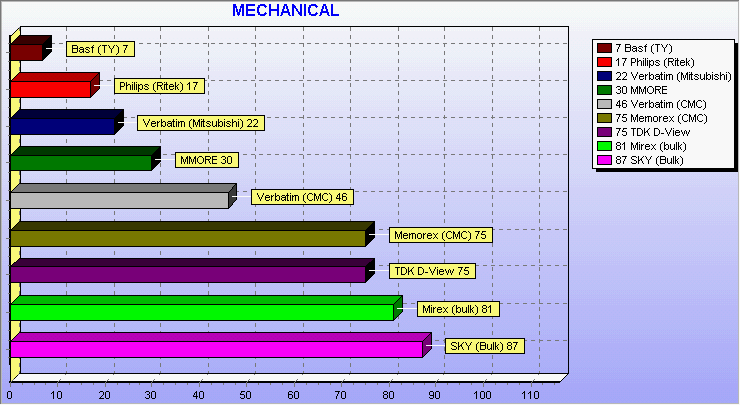 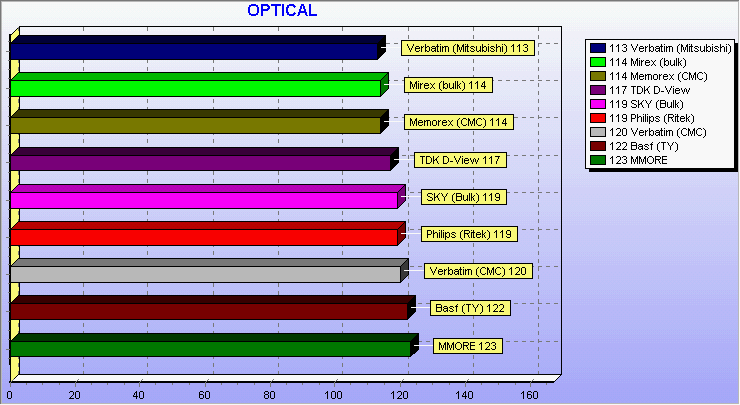 The diagrams for the CD-Rs recorded at 8X 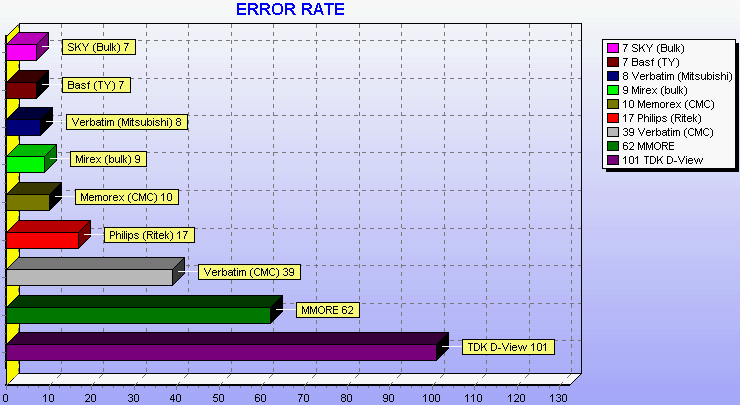   The test results of the discs recorded at the CD-RW TEAC CD-W54E driveThe diagrams for the CD-Rs recorded at 2X 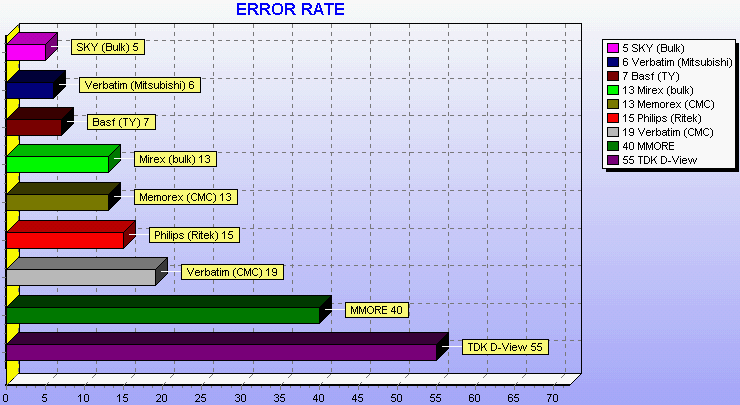 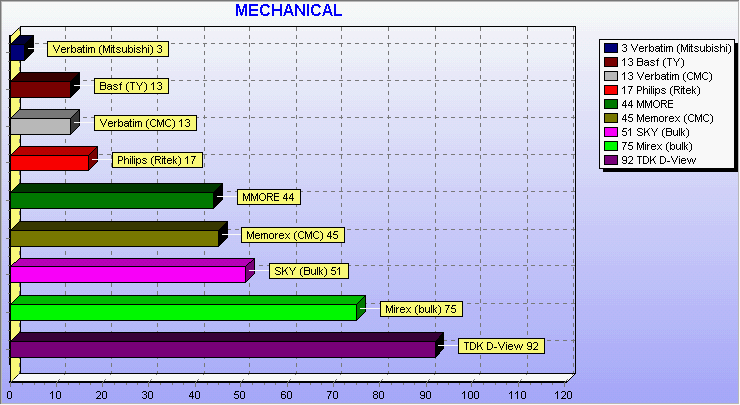 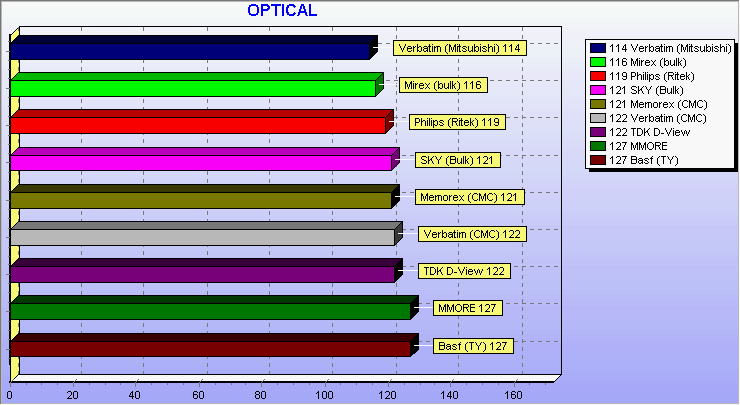 The diagrams for the CD-Rs recorded at 4X 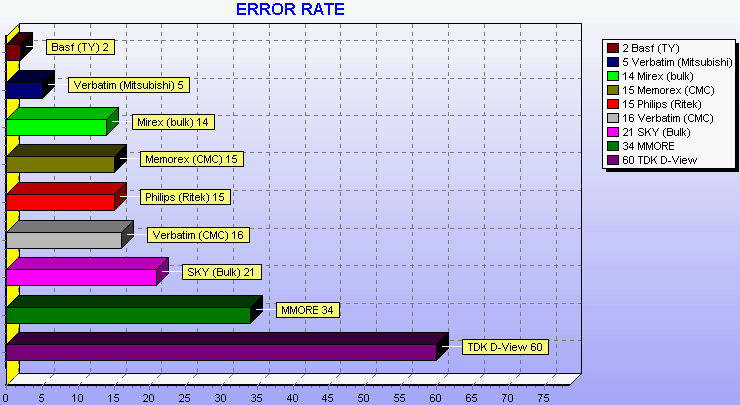 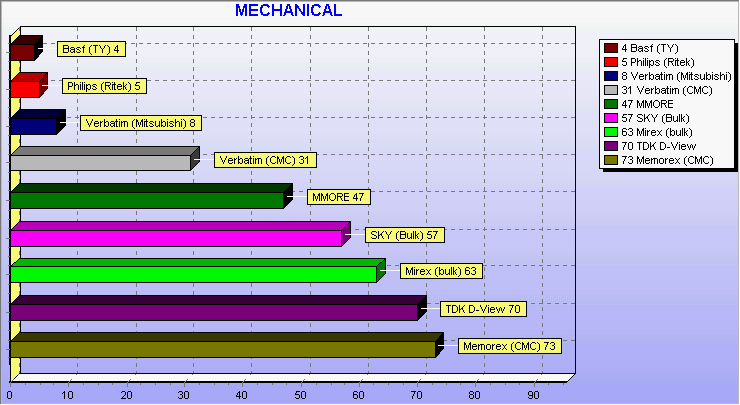 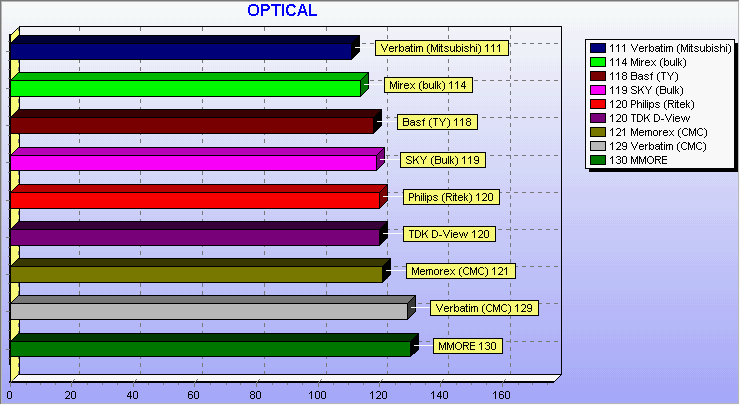 On this page you can see the combined graphics of all three test parameters of the discs recorded at the corresponding speeds. The calculation procedure is shown here.
For the source data refer here
(the Plextor W124TSi recorder) and here
(the TEAC CD-W54E recorder).
Write a comment below. No registration needed!
|
Platform · Video · Multimedia · Mobile · Other || About us & Privacy policy · Twitter · Facebook Copyright © Byrds Research & Publishing, Ltd., 1997–2011. All rights reserved. |